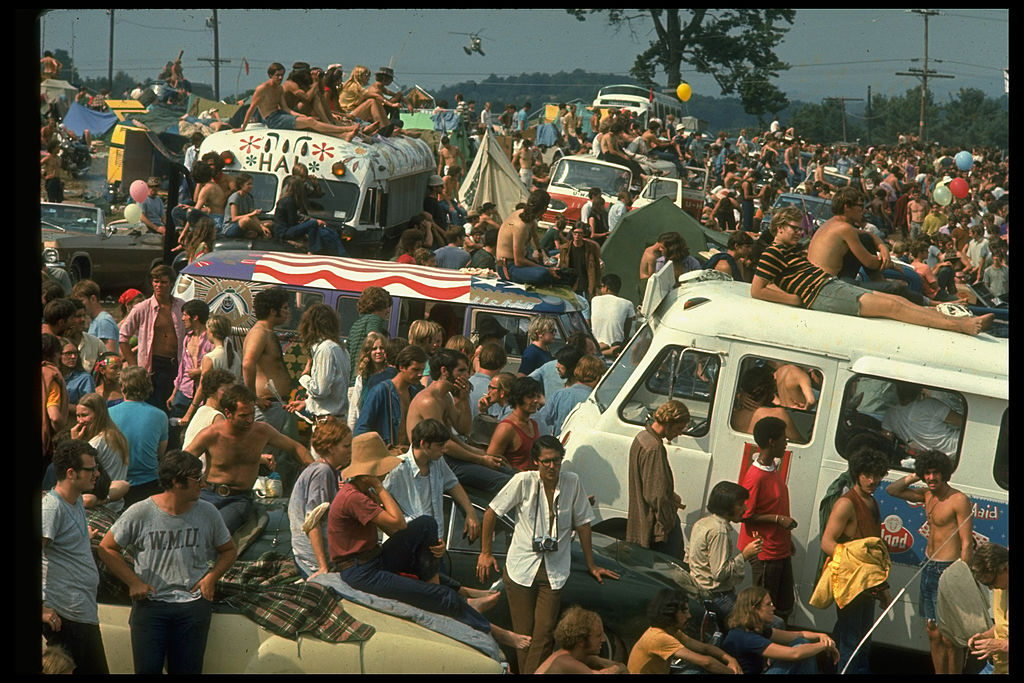
Billed as “An Aquarian Exposition: 3 Days of Peace & Music,” the music festival that would become the 20th century’s most famous was always called Woodstock. But Woodstock, which spanned three days in August of 1969, was not actually held in the Woodstock, NY.
The place where it did end up being held, in Bethel, N.Y., wasn’t the organizers’ first choice. As Mike Evans, co-editor of Woodstock: Three Days that Rocked the World, tells TIME, the venue for the festival changed not once, not twice, but four times.
Woodstock Ventures, the company that helped fund and organize the event, was founded by four men, one of whom, Michael Lang, had helped promote the successful Miami Pop Festival in May of 1968. Coming off the success of his last festival, Lang and his team were able to book established rock talent for Woodstock. But finding a place to hold their dream event was harder.
The original hope was to hold it in Woodstock, N.Y., a town that was already known for its music culture.
Decades prior to the festival, in the early 20th century, Woodstock had been the home of the Byrdcliffe artist residency program, where artists and writers came to refine their crafts. It sponsored exhibitions and offered classes, concerts and theater events. “There was a whole series of classical music concerts called the maverick concerts, which started in a woodland section called Chapel in the Woods,” Evans says.
This is what kindled Woodstock’s reputation, which continued into the ’60s and beyond. “By the time the rock-and-roll communities heard of Woodstock, it was already established as a kind of Bohemian art center,” Evans says. Acts like The Band, Bob Dylan, Peter Yarrow and Janis Joplin were among those who frequently visited or lived in Woodstock before the festival was ever conceptualized.
But when the promoters brought their idea to the local community, despite Woodstock’s reputation, objections were had, due to the number of people the event might attract.
From that point, Evans says, the festival was moved to a town called Saugerties, about 10 miles east of Woodstock. But there, too, Woodstock Ventures encountered similar problems with the venue. “So the next port of call was Wallkill, which is about 35 miles south of Woodstock,” Evans recounts. There, the organizers were able to rent 300 acres of the Howard Mills Industrial Park in the Spring of 1969.
But in the months leading up to the festival, local residents were in opposition, again because of the idea of their town hosting a predicted 50,000 young people for a concert. By this time, without a definite venue, posters and fliers were already in the process of being created for the event. It was on July 15, 1969 — precisely a month before the festival began — when the town official rescinded its permit for the Woodstock festival, on the grounds of the portable restrooms not meeting Wallkill city code.
With weeks left, organizers were desperately in need of a venue. About an hour and a half southwest of Woodstock is the town of Bethel. This is the town where the festival eventually took place, all thanks to a dairy farmer named Max Yasgur, who rented his 600-acre field out to Woodstock Ventures for what Rolling Stone at the time reported to be $50,000.
But it was too late to change the name to the Bethel Festival. Since all the talent was booked under the name Woodstock, the organizers simply kept it. “They kind of got stuck with the name really by default,” Evans says.
More Must-Reads from TIME
- L.A. Fires Show Reality of 1.5°C of Warming
- Home Losses From L.A. Fires Hasten ‘An Uninsurable Future’
- The Women Refusing to Participate in Trump’s Economy
- Bad Bunny On Heartbreak and New Album
- How to Dress Warmly for Cold Weather
- We’re Lucky to Have Been Alive in the Age of David Lynch
- The Motivational Trick That Makes You Exercise Harder
- Column: No One Won The War in Gaza
Write to Nadia Suleman at [email protected]